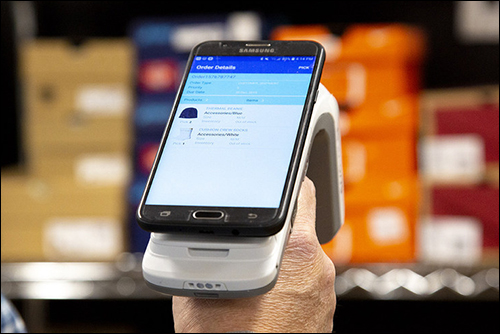Technology company Checkpoint has released a new version of its HALO Internet of Things (IoT) software platform to support in-store fulfilment of omnichannel orders, including a feature known as “task management” and updated omnichannel-based functionality in an app used in stores. The software automatically routes online orders to the appropriate stores based on inventory availability, and store associates can automatically receive and then fulfill “buy online pickup in store” (BOPIS) orders, as well as ship-from-store purchases. Companies such as Spanish fashion brand Desigual are using the latest version of HALO to streamline their omnichannel services.
Checkpoint makes RF- and RFID-based loss-prevention and merchandise-visibility solutions. Retailers can use the company’s system to gain inventory data and reduce the incidence of theft. The firm released its HALO solution in 2018 to provide UHF RFID-based visibility into store inventory, as well as data regarding the location and status of goods at manufacturing sites and distribution centers, according to Carl Rysdon, Checkpoint’s VP of RFID solutions.
Use cases include tracking goods from the point of manufacture to the store, or from DC to store, or in the store itself. At the store level, everything the associate does can be accomplished via an app on an iOS- or Android-based device paired with his or her choice of RFID reader. Rysdon calls it the only platform with this widescale functionality in the industry.
As omnichannel sales become the norm, however, retailers are increasingly using RFID technology and solutions such as HALO to enable order fulfillments. For instance, some retailers have been using HALO’s cloud-based software and app to look up the in-store availability of items, in order to find them within a store using an RFID reader, and thereby speed up the process of in-store fulfilment.
“We help our clients deliver on their omnichannel promise to their customers,” Rysdon says. The company thus developed an omnichannel functionality that enables retailers to integrate RFID data into their existing order-management system, thereby streamlining the order and fulfillment process.
When a customer places an order, the HALO software automatically determines which stores have the products being purchased, in the most appropriate locations. It then forwards that data to the store. A task is automatically generated for store associates, which they can view on their HALO app in the form of a shopping basket. The employees can use the app on their phone, which is paired with an off-the-shelf UHF RFID reader via a Bluetooth connection. They can use the app and the handheld to perform inventory-related tasks in the store, including filling orders.
With HALO’s new Item Locator feature on the app, sales associates can use their handheld reader to guide them to a particular item. They can simply select the prompt to locate that product, then use the reader similarly to a Geiger counter. While packing the order, workers scan the item with the RFID handheld, select an item on the touch screen and mark it as “done.” Alternatively, they can scan a barcode on the product’s label. Retailer managers can view this data to understand the status of each shipment, and to receive inventory level updates. In that way, they know when orders are not fulfilled and when problems may arise, as well as monitor inventory levels at each store.
This omnichannel functionality, paired with the task-management feature, ensures that employees are more productive, Rysdon explains, since order fulfillment can be accomplished easily without workers spending time locating goods and then manually updating the order status in the management software. Thus, he says, they are “able to focus more on customer-facing activity.”
Inventory data from a store’s enterprise resource planning system may not be accurate or up to date. Therefore, an order may still be sent to a store, even if all items purchased may not be available there. That can lead to order rejection, delays ir multiple shipments. However, HALO Task Manager distributes orders based on inventory availability. This drives several key performance indicators for retailers. For one thing, Rysdon says, because the inventory data is updated with each order, and because the HALO system routes orders specifically to stores with available inventory, a higher fulfillment success rate results.
That leads to time savings, greater fulfillment success rates and lower shipping costs, Rysdon explains, since a company can send out items from fewer locations. Additionally, managers can track the units per hour for pick times or shipping tasks, and they can identify when there may be a problem that is affecting efficiency.
The Task Management functionality has been expanded to enable users to create non-RFID or inventory-management-based projects for staff members, Rysdon notes. For instance, if management requires personnel to accomplish a specific job, such as cleaning a sales area, that can be shared with the staff via the HALO app.
Existing HALO customers have access to the added functionality. Desigual has already launched the solution, while several other retailers are in the pilot stage of the latest HALO version. Because HALO is provided as a software-as-aservice, Checkpoint can continue to add functionality for a retailer or brand, as well as enabling that company to select the features it needs. “We have a roadmap to add functionality to create more ways for customers to benefit from RFID,” Rysdon states.



